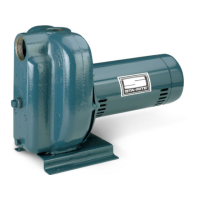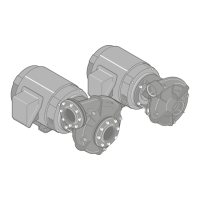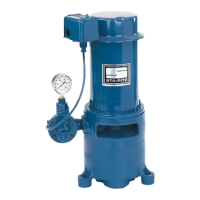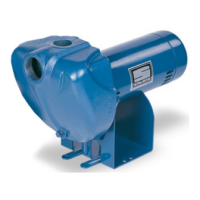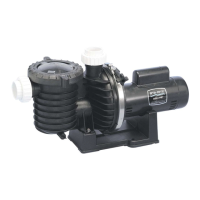12
SX218 (03/09/20)
MAINTENANCE
LUBRICATION
Liquid end of pump requires no lubrication.
Motor bearings are lubricated at the factory. Re-lubrication at
intervals consistent with the amount of use can enable maximum
bearing life. Refer to motor manufacturer website for proper motor
lubrication and maintenance instructions.
PERFORMANCE CHECK
Periodically check the output of the pump. If performance is
noticeably reduced, refer to “Troubleshooting” on page 17.
OBSERVATIONAL MAINTENANCE
When the pump and system operation have been stabilized, verify
that pump unit is operating properly. Observe the following:
Vibration: All rotating machines can be expected to produce some
vibration. However, excessive vibration can reduce the life of the unit.
If the vibration seems excessive, discontinue operation, determine
cause of the excessive vibration, andcorrect.
Noise: When the unit is operating under load, listen closely for
unusual sounds that might indicate that the unit is in distress.
Determine the cause andcorrect.
Operating Temperature: The pump unit is cooled by the water
flowing through it and will normally be at the temperature of the
water being pumped. During operation, heat is dissipated from the
pump and the driver. After a short period of time, the surface of the
pump bracket will be quite warm (as high as 66°C/150.8°F), which is
normal. If the surface temperature of the pump bracket or driver
is excessive (higher than 66°C/150.8°F), discontinue operation,
determine cause of the excessive temperature rise, and correct.
Bearings will run hotter for a brief run-in period after packing, which
is normal. However, worn bearings will cause excessive temperatures
and need to be replaced.
Mechanical Seal: The seal is enclosed within the pump and is
self-adjusting. Seal is cooled and lubricated by the liquid being
pumped. Refer to “Mechanical Shaft Seal” section on page 14 for
removal and replacement information. Do not run pump dry!
PUMP PROTECTION-COLD WEATHER/WET WEATHER
INSTALLATIONS
System Drains: Use drain valves to empty system, including pump
case, to prevent freezing damage.
Shelter: If possible, provide shelter for unit to protect from weather.
Allow adequate space around pump unit for service, as in the image
below.
• A pump shelter with removable roof protects pump from rain,
dust, plants, and the sun. Shelter should be positioned to
avoid flooding.
• Proper ventilation is a must.
• Allow for proper drainage away from pump andmotor.
• Check local codes for all electrical connections.
• Check local codes for all plumbing connections.
Condensation: When the temperature of metal parts is below
dew point and the surrounding air is moist, water will condense
on the metal surfaces and can cause corrosion damage. In severe
situations, a space heater can be considered to warm the unit.
Fan
Recommended
Air
Movement
Removable for service.
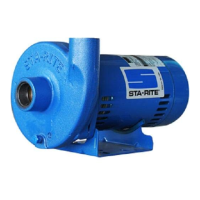
